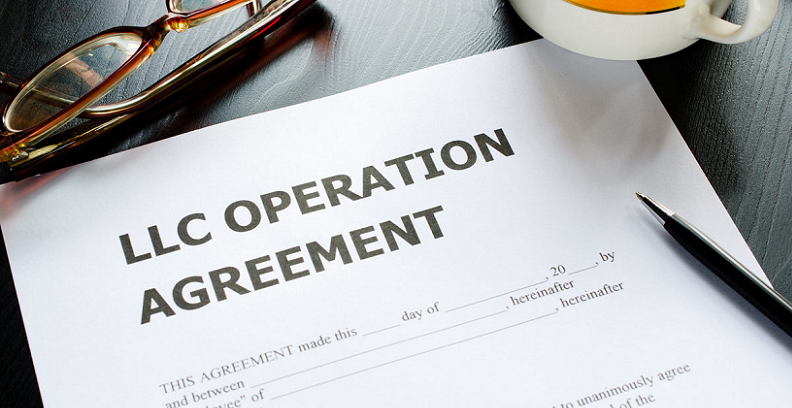
Embarking on the journey to business ownership can feel both exciting and overwhelming. The journey may be paved with countless questions: How does the registration process work? What type of business entity should you choose? What are the legal implications of your decisions? Here we answer all these queries and more, providing you with a clear, step-by-step roadmap to register your business confidently.
Contents
Understanding Business Formation
Business formation refers to the legal establishment of your business as a particular entity—be it a sole proprietorship, partnership, corporation, or limited liability company (LLC). The type of structure you choose can affect many aspects of your business, including your level of control, the paperwork you have to file, the taxes you pay, and the level of personal liability you face.
Explanation of Business Formation
When you form a business, you’re essentially creating a separate legal entity for your enterprise. This can protect you from personal liability for business debts or legal actions, and can also provide potential tax benefits. It’s crucial to understand that the structure of your business determines how much you pay in taxes, your ability to raise capital, the paperwork you need to file, and your personal liability.
Different Types of Business Entities
The type of business entity you choose will largely be dictated by the nature of your business, the number of owners, your preferred level of control, and your willingness to assume liability [1]. Here, we’ll cover the four most common types:
Sole Proprietorship
This is the simplest form of business entity and is owned by one individual. As a sole proprietor, you have complete control over your business, but also bear all the responsibility for its debts and liabilities. Income and losses from the business are reported on your personal income tax return.
Partnership
A partnership is a business owned by two or more people. All partners share in the profits and losses of the business, and each partner is also personally liable for the business’s debts and obligations. Partnerships can be a good choice for businesses with multiple owners or professional groups like attorneys or doctors.
Corporation
A corporation is a legal entity that is separate and distinct from its owners. This means that the corporation (and not the individual business owners) is legally liable for the actions and debts the business incurs. Corporations are more complex than sole proprietorships and partnerships and require complying with more regulations and tax requirements.
Limited Liability Company (LLC)
An LLC is a hybrid type of legal structure that provides the limited liability features of a corporation and the tax efficiencies and operational flexibility of a partnership. Owners of an LLC are referred to as members, which may be individuals, corporations, or even other LLCs.
Factors to Consider when Choosing a Business Structure
Choosing the right business structure requires careful consideration. It is important to think about the long-term implications of each structure. Some factors you should take into account include ease of formation, tax implications, potential for growth, and your personal liability.
The Legal and Financial Implications of Each Business Type
Each business structure has unique legal and financial implications. For instance, sole proprietors and partners in a partnership are personally liable for business debts, meaning creditors can go after your personal assets if your business can’t pay its debts. In contrast, corporations and LLCs offer personal liability protection. On the tax front, corporations are subject to corporate tax rates, while sole proprietorships, partnerships, and LLCs are pass-through tax entities, meaning business profits and losses are reported on the owner’s personal tax return [2].

New Business Pre-Registration Steps
Before you can officially register your business, there are several preparatory steps you need to undertake. These steps ensure that your business is well-positioned to launch and thrive once the registration is complete. They include developing a business plan, conducting market research, securing funding, and choosing a business name.
Business Plan Development
A robust business plan is your roadmap to success and a crucial first step in the pre-registration process. Your business plan should include a description of your business, an analysis of your target market, an overview of your marketing and sales strategies, and financial projections. This document not only guides your business operations but is also essential when seeking funding from investors or financial institutions.
Market Research and Analysis
Understanding the market in which you’ll operate is critical to the success of your business. Conduct thorough research to understand your potential customers, competitors, and industry trends. This knowledge will help you refine your products or services, pricing, and marketing strategy to align with market demands and set your business apart from competitors [3].
Securing Funding Options
Now, let’s talk money. Depending on your business type and scope, you may need significant capital to get off the ground. It’s important to explore all your funding options early on:
Self-funding
Self-funding, or bootstrapping, involves using your personal savings or income to start your business. This gives you full control over your business but can also pose a significant financial risk.
Loans and Grants
Several institutions offer loans to small businesses. You may also be eligible for government grants, particularly if your business is in a field like technology, education, or health. Research your options and understand the terms before you commit.
Venture Capital
Venture capitalists invest in businesses they believe have high growth potential. In return, they often want equity in your company. This can be a great source of funding if you’re willing to share ownership.
Crowdfunding
Crowdfunding platforms allow you to raise small amounts of money from a large number of people, typically via the Internet. This can be a good option if your business idea resonates with the public.
Selecting a Business Name and Checking its Availability
Lastly, before you can register your business, you’ll need to choose a business name. This name should reflect your brand and be easy for customers to remember. Once you have a name in mind, you’ll need to check if it’s available and not already in use by another company. In most states, you can do this by conducting a name search on your state’s Secretary of State website.

New Business Registration Process
Once you’ve laid a solid foundation through your pre-registration steps, it’s time to tackle the main event: the registration process itself. This process involves filing the necessary paperwork, paying a registration fee, and obtaining an Employer Identification Number (EIN). It’s important to note that the specific process can vary from state to state.
An Overview of the Registration Process
The business registration process, in its most general form, involves submitting the required documents and information to your state’s Secretary of State office or a similar state agency. This typically includes details about your business such as the chosen name, the business structure, and the names and addresses of the owners. Once these documents are filed and approved, your business is officially registered and ready to operate within your state [4].
Step-by-Step Registration Guide
Let’s now break down the registration process into a more detailed, step-by-step guide:
Filing the Necessary Paperwork
The first step in the registration process is filing the necessary paperwork. The exact forms you’ll need to fill out depend on the structure of your business. For instance, if you’re starting an LLC, you’ll need to file the Articles of Organization. For a corporation, it’s the Articles of Incorporation. These documents provide basic information about your business, including its name, purpose, and information about the business owners.
Paying the Registration Fee
Upon filing the necessary paperwork, you’ll typically need to pay a registration fee. The amount of this fee varies depending on your state and the type of business entity you’re registering.
Obtaining an Employer Identification Number (EIN)
Once your business registration is approved, your next step is to obtain an Employer Identification Number (EIN) from the IRS. This is essentially a social security number for your business and is required for tax purposes and to hire employees. You can apply for an EIN for free on the IRS website.
Understanding Your State’s Specific Requirements
As previously mentioned, the specific process for registering a business can vary by state. Some states may require additional steps or documentation. Make sure to check with your state’s Secretary of State office or a similar agency to understand your state-specific requirements.

New Business Post-Registration Activities
There are several steps you need to take after registering your business to ensure that you’re ready to open your doors and operate legally. These include setting up a business bank account, registering for state and local taxes, acquiring necessary permits and licenses, hiring employees, and purchasing business insurance [5].
Setting up a Business Bank Account
One of the first things you should do after registering your business is setting up a separate bank account for your business. A business bank account helps you organize your finances, simplifies tax filing, and gives your business a professional appearance to customers and clients. To open a business bank account, you’ll typically need your EIN, business formation documents, and ownership agreements if applicable.
Registering for State and Local Taxes
Once your business is registered, you’ll need to register for state and local taxes. The specific taxes you need to register for depend on your business structure and the nature of your business. Common taxes include sales tax, unemployment insurance tax, and workers compensation. You can register for most state taxes through your state’s Department of Revenue or a similar agency.
Acquiring Necessary Permits and Licenses
Your business may require specific permits or licenses to operate legally. The type of permit or license you need can vary depending on the nature of your business and your location. You can typically find this information through your local county or city government website. Make sure to acquire all necessary permits and licenses before you start operating to avoid penalties.
Hiring Employees and Understanding Employer Responsibilities
If you plan to hire employees, there are several steps you’ll need to take as an employer. You’ll need to set up a payroll system, withhold appropriate taxes, follow labor laws, and more. Make sure you understand your responsibilities as an employer before you start hiring.
Purchasing Business Insurance
Business insurance helps you manage risks and focus on growing your business. The types of insurance you need can depend on the nature of your business, but common types include general liability insurance, product liability insurance, professional liability insurance, and commercial property insurance.
References
[1] Register your business
[2] How To Register A Business Name (2023 Guide)
[3] How to register a business: 6 steps you need to take
[4] How to Register Your New Startup
[5] How and Why You Should Register Your Business Name
